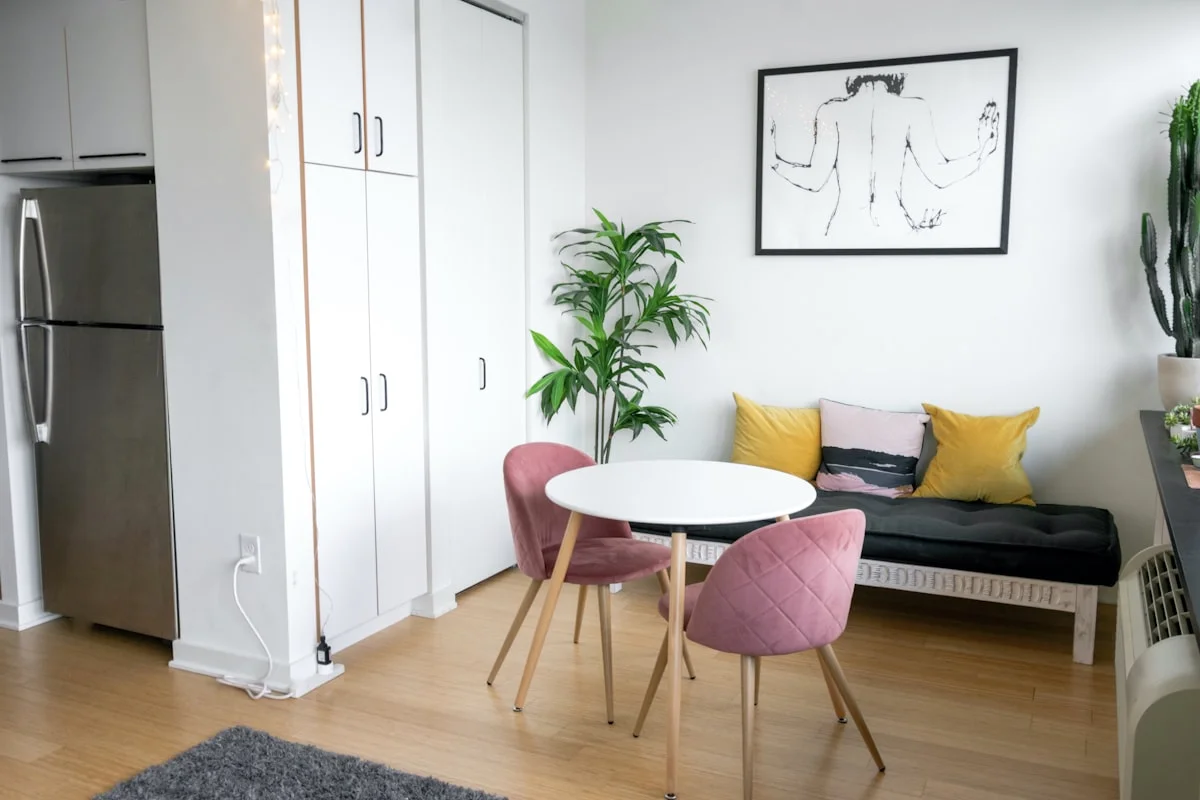Small Room Furniture Arrangement: Smart Tips to Maximize Space in 2025
Struggling with small room furniture arrangement? You’re not alone. Many homeowners face the challenge of making compact spaces feel open, functional, and stylish. The right small room furniture arrangement can transform even the tiniest room into a cozy, organized haven. Whether you’re decorating a studio apartment, a cramped bedroom, or a compact living area, these expert-backed strategies will help you optimize every square foot in 2025.
Why Small Room Furniture Arrangement Matters
Living in a small space doesn’t mean sacrificing comfort or style. Thoughtful small room furniture arrangement ensures that your room feels spacious, uncluttered, and inviting. Poorly arranged furniture can make a room feel cramped and chaotic, while a well-planned layout enhances flow, functionality, and aesthetic appeal. The key is to prioritize multi-functional pieces, smart storage solutions, and strategic placement to create the illusion of more space.
Start with a Floor Plan
Before moving any furniture, sketch a rough floor plan of your room. Measure the dimensions of the space and your furniture to ensure everything fits without overcrowding. Digital tools like room planner apps can help visualize different layouts before committing to one. A well-scaled floor plan prevents the frustration of rearranging heavy furniture multiple times and ensures a balanced, harmonious setup.
Choose Multi-Functional Furniture
In small spaces, every piece of furniture should serve multiple purposes. Opt for a sofa bed that doubles as guest seating, a coffee table with hidden storage, or a fold-out desk that converts into a dining table. Multi-functional furniture reduces clutter and maximizes utility, making your small room furniture arrangement more efficient. Look for sleek, space-saving designs that don’t compromise on comfort or style.
Prioritize Vertical Space
When floor space is limited, think vertically. Tall bookshelves, wall-mounted shelves, and floating cabinets free up valuable floor area while providing ample storage. Vertical storage draws the eye upward, creating the illusion of higher ceilings and a more open feel. Use vertical space for books, decor, and everyday essentials to keep surfaces clean and uncluttered.
Keep Pathways Clear
Avoid blocking natural walkways with bulky furniture. Ensure there’s enough room to move comfortably around the room without obstacles. Ideally, leave at least 2-3 feet of clearance for main pathways. An open flow makes the room feel larger and more functional, enhancing both aesthetics and practicality in your small room furniture arrangement.
Use Light Colors and Reflective Surfaces
Light, neutral colors make small rooms feel airy and expansive. Soft whites, pastels, and light grays reflect natural light, brightening the space. Incorporate mirrors to amplify light and create depth—placing a large mirror opposite a window works wonders. Glossy finishes and metallic accents also enhance brightness, contributing to a more open atmosphere.
Scale Furniture to Room Size
Oversized furniture can overwhelm a small room, while too-small pieces may look out of place. Choose furniture that fits the scale of your space—low-profile sofas, slim armchairs, and compact dining sets work best. Avoid heavy, bulky designs that dominate the room. Proportional furniture ensures a balanced, cohesive look without sacrificing comfort.
Embrace Minimalism
Less is more in small spaces. A minimalist approach prevents visual clutter and keeps the room feeling open. Stick to essential furniture and decor, avoiding unnecessary knick-knacks. If you love accessories, opt for a few statement pieces rather than multiple small items. A clean, streamlined aesthetic enhances both functionality and style in your small room furniture arrangement.
Incorporate Smart Lighting
Layered lighting enhances ambiance and functionality in small rooms. Combine overhead lighting with task lamps and accent lights to create depth and warmth. Avoid relying solely on a single harsh light source, which can make the room feel flat. Dimmer switches and adjustable lighting allow you to control the mood, making the space more versatile.
Experiment with Flexible Layouts
Don’t be afraid to rearrange furniture until you find the perfect setup. Sometimes, a slight angle or a different focal point can make a big difference. Try floating furniture away from walls to create intimate conversation areas or use rugs to define zones in multi-purpose rooms. Flexibility is key to optimizing small spaces effectively.
Final Thoughts on Small Room Furniture Arrangement
With the right strategies, even the smallest room can feel spacious and stylish. By focusing on multi-functional furniture, smart storage, and strategic placement, you can create a comfortable, clutter-free environment. Remember, the goal of small room furniture arrangement is to enhance both functionality and aesthetics—so take your time, experiment, and enjoy the process of transforming your compact space into a cozy retreat in 2025.

